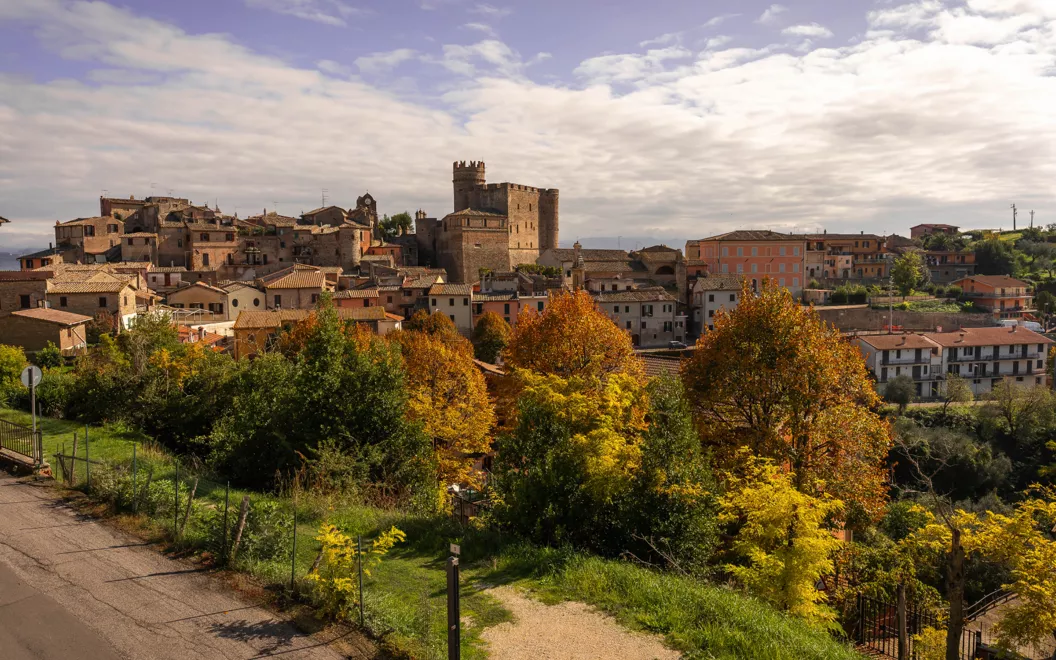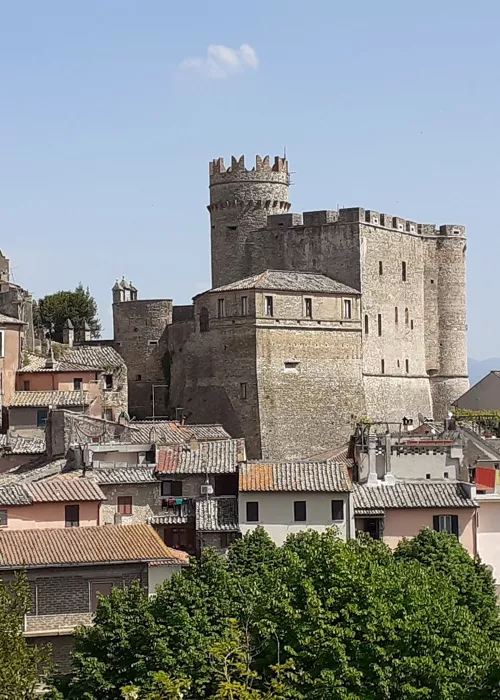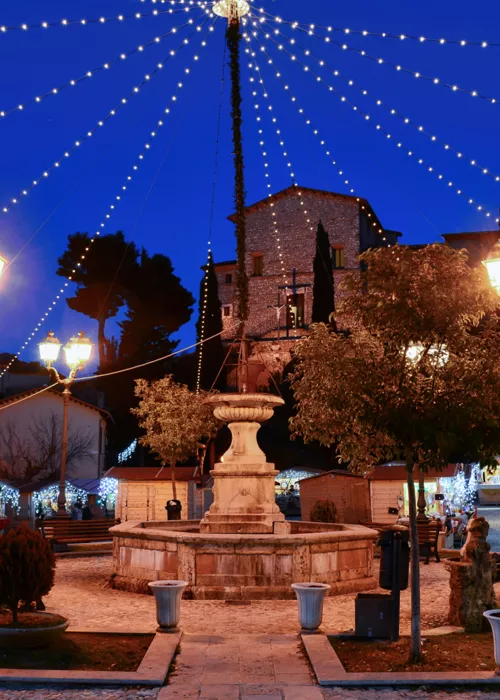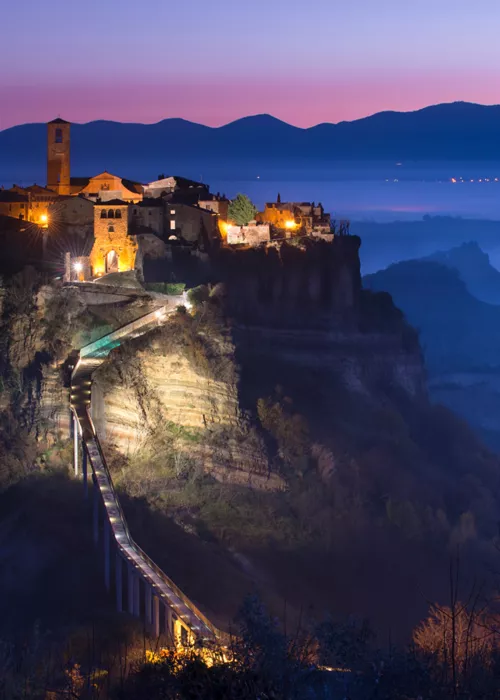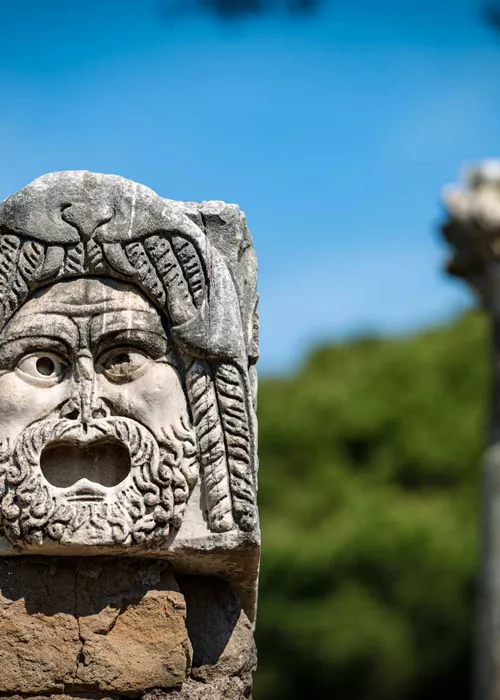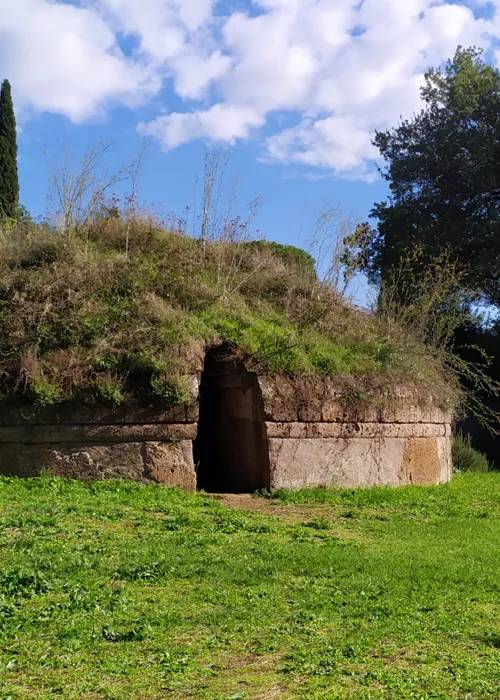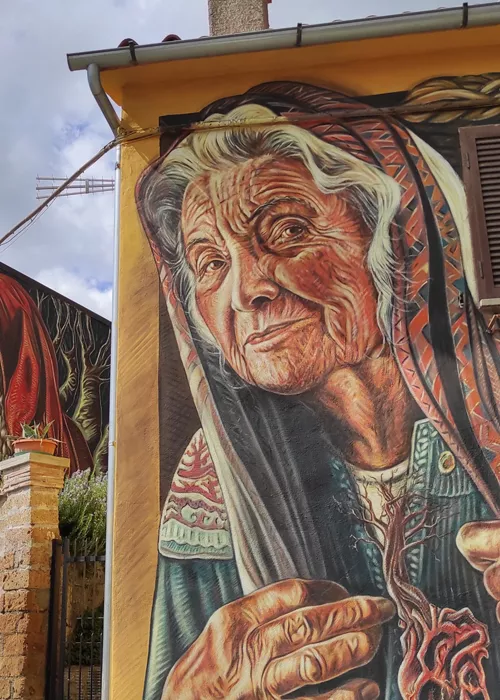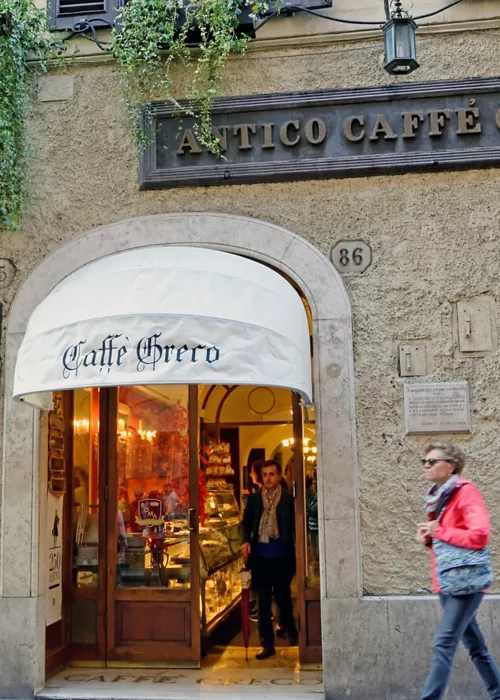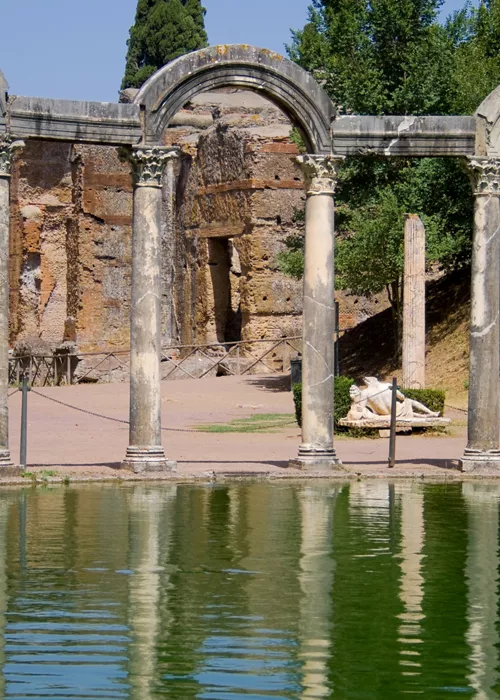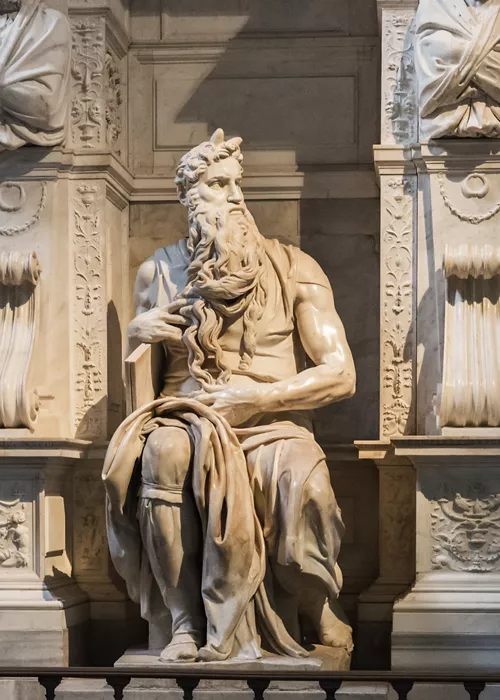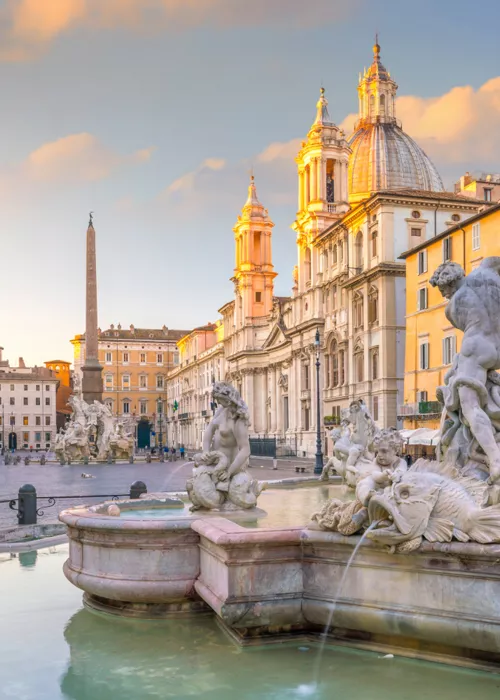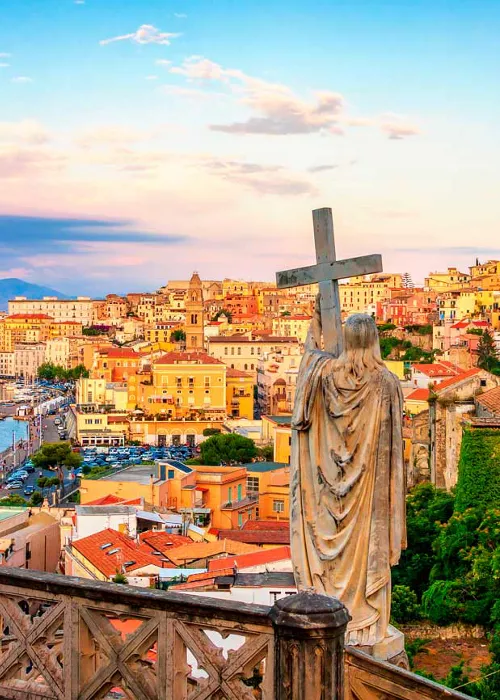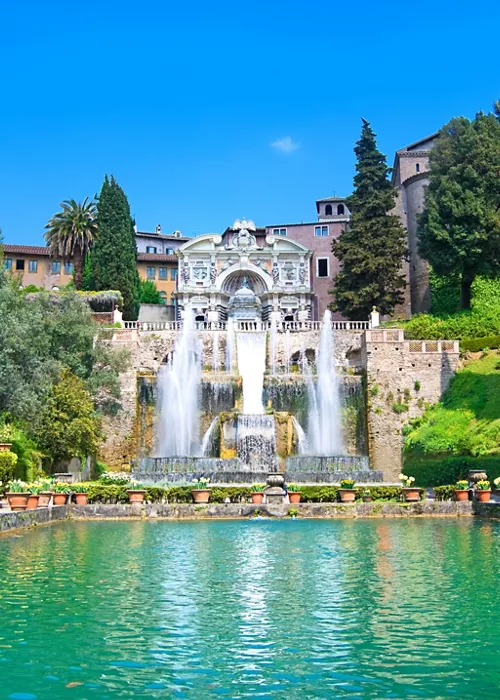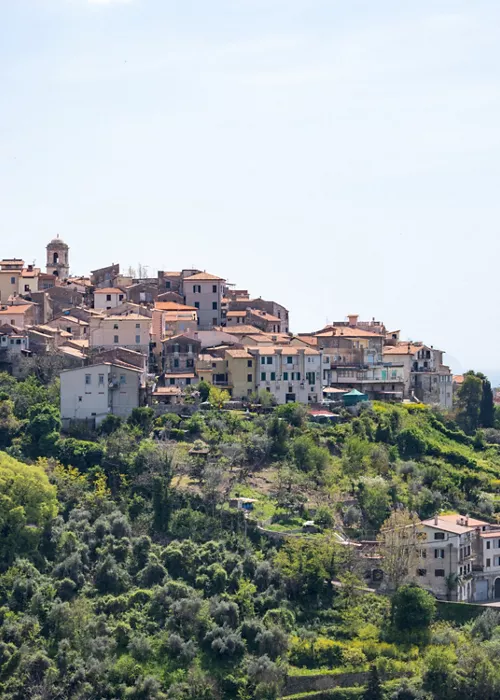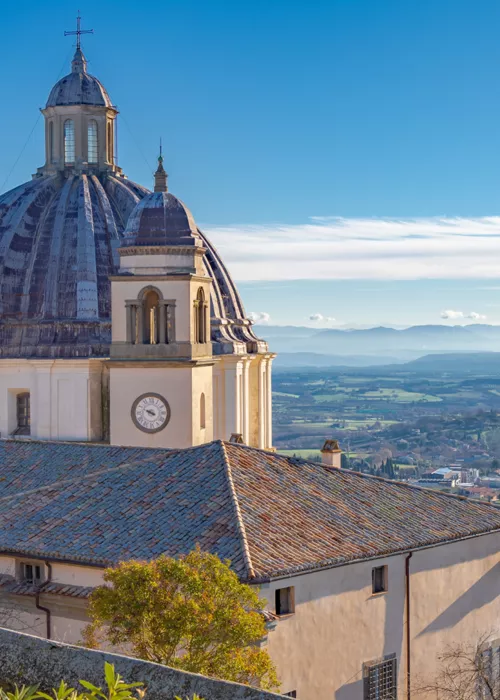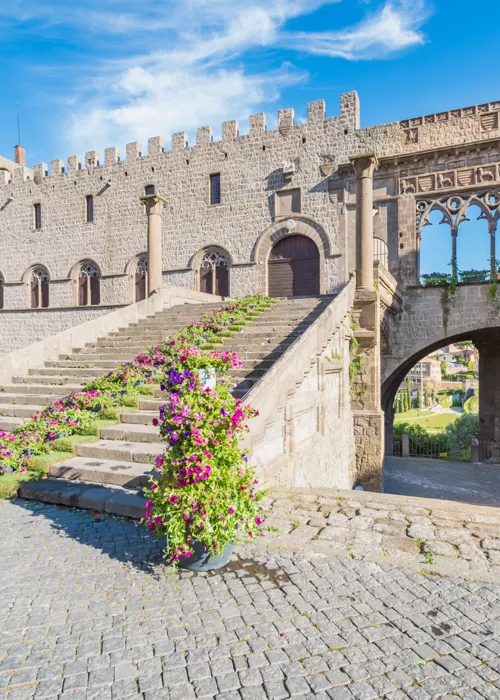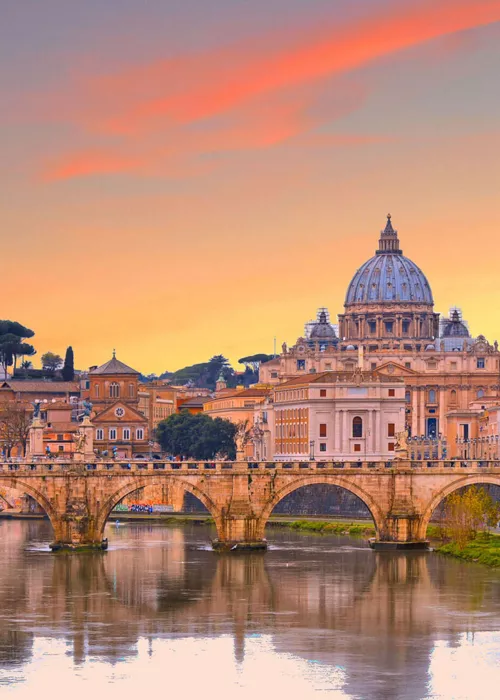The village of Nazzano
2 minutes
The sight of a fortified tower announces a castle perched on high ground over the Tiber Valley. If you look at Nazzano from a distance, it appears almost intimidating, but it is worth getting closer and exploring the old town: narrow streets of cobblestones, gentle curves, houses neatly set side by side that sometimes give way to more elegant buildings. The village conveys a sense of security and calm, and little by little we understand how and why Nazzano is destined to remain in our hearts.
Why it is special
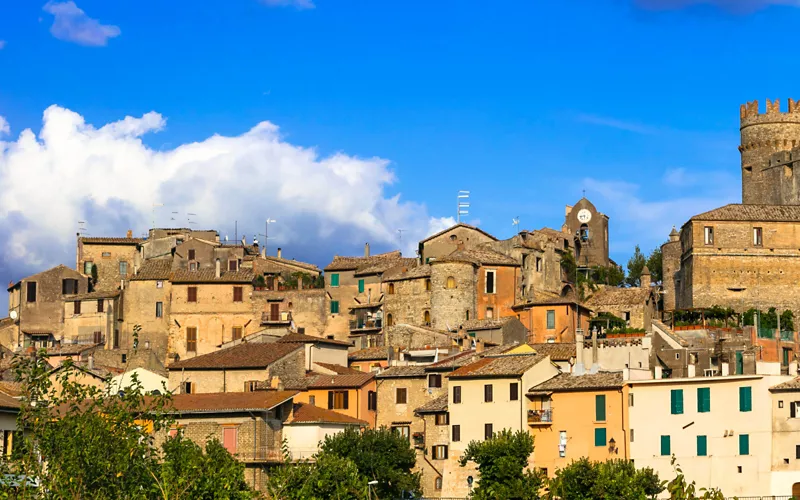
At first it may be difficult to understand where this sense of peace comes from, but we only have to pay a little attention to our steps to discover the trick: Nazzano is built around a single street that spirals up around the hill. It is like the entire village was designed by a clever and creative hand, following a very unusual pattern. We climb up, little by little, meet the church of Santa Maria Consolatrice, and then up again, toward the castle and the open view over the surrounding nature.
Not to be missed
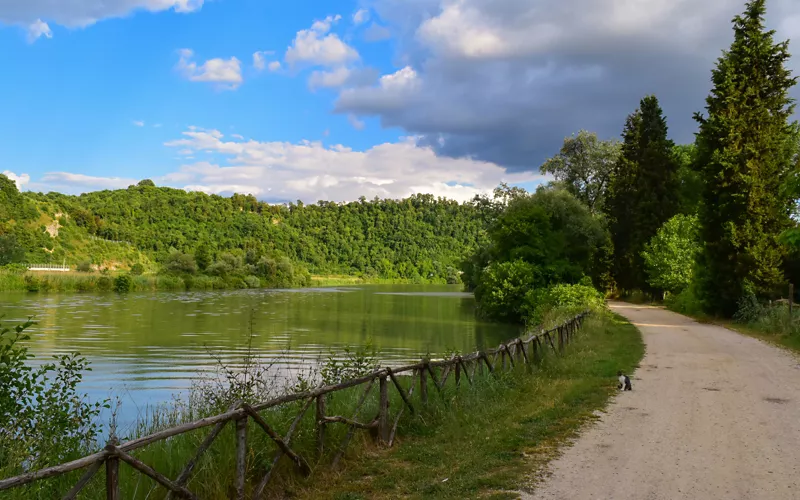
The village also gave its name to a lake, the result of the construction of a dam where the Tiber and Farfa rivers meet. This is, however, pretty common in the Italian peninsula. What is truly special here, is the ecosystem that the lake has generated, a wetland so rich in terms of biodiversity that it has been declared a protected area: the Nazzano Tevere-Farfa Nature Reserve. Imagine being immersed in the paths of the Reserve, surrounded by lush vegetation and water, looking up at the castle, preferably at sunset. It will really be like being plunged into another time, when the tidy countryside did not exist, and the wilderness reigned.
A bit of history
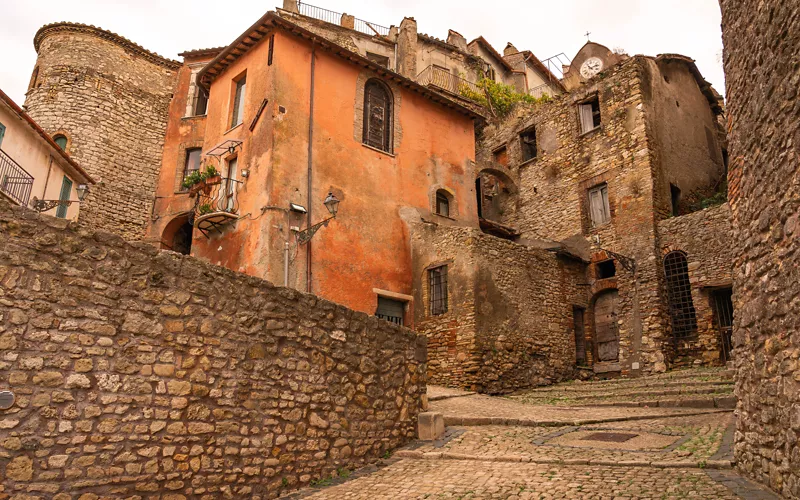
The territory of Nazzano has been inhabited since the Bronze Age, but it reached its maximum development during the Roman era. It is possible, in fact, to observe several traces dating back to that period, such as the Temple of the Sylvan God, whose remains were later used to build other religious buildings: the Church and the Convent of St. Francis.

